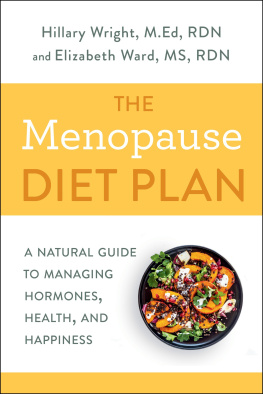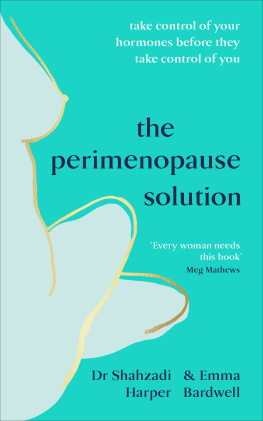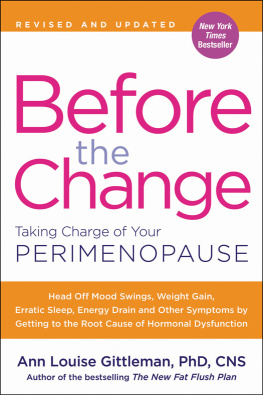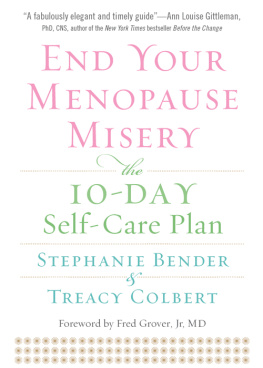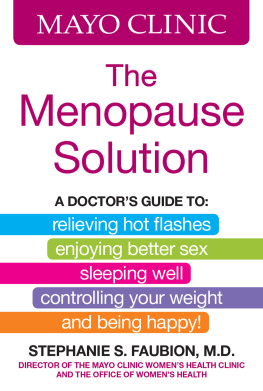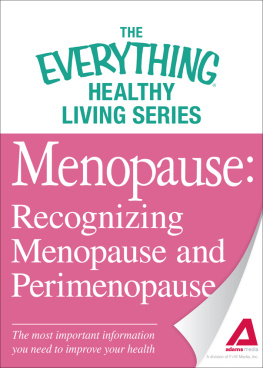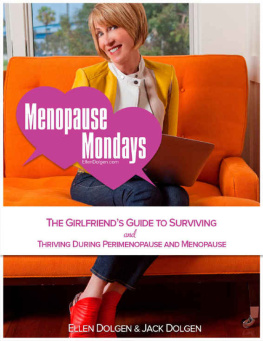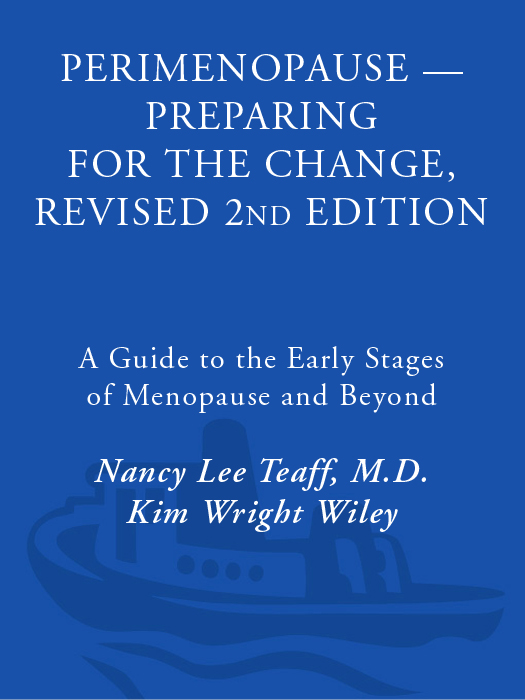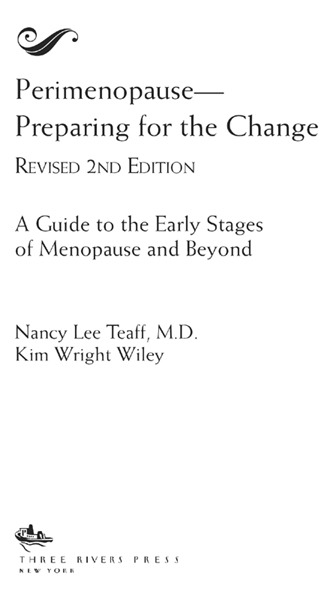Copyright 1999 by Nancy Lee Teaff, M.D., and Kim Wright Wiley
WarningDisclaimer
This book is not intended to provide medical advice and is sold with the understanding that the publisher and the author are not liable for the misconception or misuse of information provided. The author and Prima Publishing shall have neither liability nor responsibility to any person or entity with respect to any loss, damage, or injury caused or alleged to be caused directly or indirectly by the information contained in this book or the use of any products mentioned. Readers should not use any of the products discussed in this book without the advice of a medical professional.
All rights reserved.
Published in the United States by Three Rivers Press, an imprint of the Crown Publishing Group, a division of Random House, Inc., New York.
www.crownpublishing.com
THREE RIVERS PRESS and the Tugboat design are registered trademarks of Random House, Inc.
Originally published by Prima Publishing, Roseville, California, in 1999.
Products mentioned are trademarks of their respective companies.
Library of Congress Cataloging-in-Publication Data
Teaff, Nancy Lee.
Perimenopause : preparing for the change : a guide to the early stages of menopause and beyond / Nancy Lee Teaff, Kim Wright Wiley.
Rev. 2nd ed
p. cm.
1. PerimenopausePopular works. I. Wiley, Kim Wright. II. Title.
RG188.T43 1999
618.175dc21
99-35567
eISBN: 978-0-307-77466-8
v3.1
To our daughters: Julia, Mary Kate, and Leigh

Contents

Foreword
I am pleased to be asked to introduce the revised edition of this valuable contribution to the womens health literature. Over the past decade there has been a growing awareness of the paucity of information for women about the normal hormonal progression in midlife. In spite of an increased emphasis on finding natural solutions to the symptoms that arise, much of the information that is available deals with the risks and benefits of hormone therapy. Many practitioners, more oriented to disease than preventive care, are either unprepared or too busy to answer all the questions which women pose. This book helps to fill the void.
In addition to being a valuable guide for women embarking on the menopausal transition this book should be of help to those who have completed this life stage and need some closure for what may have been a confusing or frightening experience as well as the significant others who support and endure. The discovery that one is merely normal after all can be very beneficial.
Nancy Lee Teaff and Kim Wright Wiley have addressed the life issues of women in their 40s and 50s including the important physical and emotional changes which occur as the ovaries produce less estrogen. Subjects such as fertility potential, contraceptive needs, symptoms of declining hormone production, risks and benefits of hormone replacement therapy, and preventive measures to improve general health are addressed in an enjoyable and lucid style. In this new edition the authors also discuss alternative therapies and review the data to support their use.
This information allows the woman to take charge of her own care with confidence. Menopause is a change and there are challenges to master. These can be weathered with grace and style by the well-informed traveler who has an excellent guidebook, such as PerimenopausePreparing for the Change, and a sense of humor.
Mary G. Hammond, M.D.
Reproductive Consultants, Raleigh, N.C.
past president, American Society for Reproductive Medicine

Preface
Kims Story
In the five years since Nancy and I wrote the first version of this book, there have been some major changes in my life. My husband and I divorced after 14 years, leaving me a part-time single parent to my thirteen-year-old daughter and 10-year-old son. Although their father and I share custody and he is very involved in the childrens lives, there were many nights after the separation when I prowled the house wondering Is there going to be enough money? Enough time to both do my job and raise these kids? More to the point, am I enough?
Soon after I began dating a younger man. Much younger. (Okay, okay, fourteen years younger.) Being with Greg challenged all my previous assumptions about aging and age categories, and Ive ricocheted through the last few years, at times feeling like a teenager, at other times feeling ancient. Clearly Im having the Mother-of-All-Midlife Crises. Each morning I halfway expect to look out into my driveway and see a red Mazda Miata parked there.
Finally, and with tragic irony, in the past five years both Nancy and I have watched our mothers battle breast cancer. Now certain health issues are no longer theoretical for me; having such a scary disease hit right in your own family changes everything. Suddenly this stuff isnt just going to happen down the road someday, or happen to some woman you see on Oprah. Suddenly this stuff is happening here and now.
As I approached my 40s and was writing the first version of this book, I was constantly juggling. Juggling work and kids and husband and community service and personal time and searching for that mythic thing called balance that was supposed to let me have it all. By the time I rounded the corner into midlife, Id had it, all right. A few of the balls were dropping and I dont think it was because I wasnt trying hard enough or was inherently clumsy. Its just that, like many American women, in my 30s I kept a pace that is impossible to sustain forever.
As you move through your 40s, its all about reevaluating. Where I used to think Can I do this? How can I fit it in? I now think Does this really matter? Can I let it go? Certain responsibilities, such as your children, your job, and your ailing parents cannot be set aside, but during my decade-long juggling act, all the balls looked the same size to me. I couldnt separate the essential things from the non-essential, couldnt decide which balls were droppable.
The key to successfully navigating midlife is plenty of self-nurturing. I think at this point you begin to suspect that no one else can do it for you, a realization that begins as a kick in the gut and ends as a kick in the butt. It leaves you free to do the work of midlifeclearing out the stuff that doesnt fit anymore, spending time doing things you genuinely enjoy, being selective and mindful about where your energy goes. On a trip to a spa out west last year, I met a wonderful older woman who was the epitome of everything youd want to be at seventya painter, hiker, world traveler, chef. As we hiked the canyons one morning, one of the younger women asked her how she stayed so amazingly vital.


